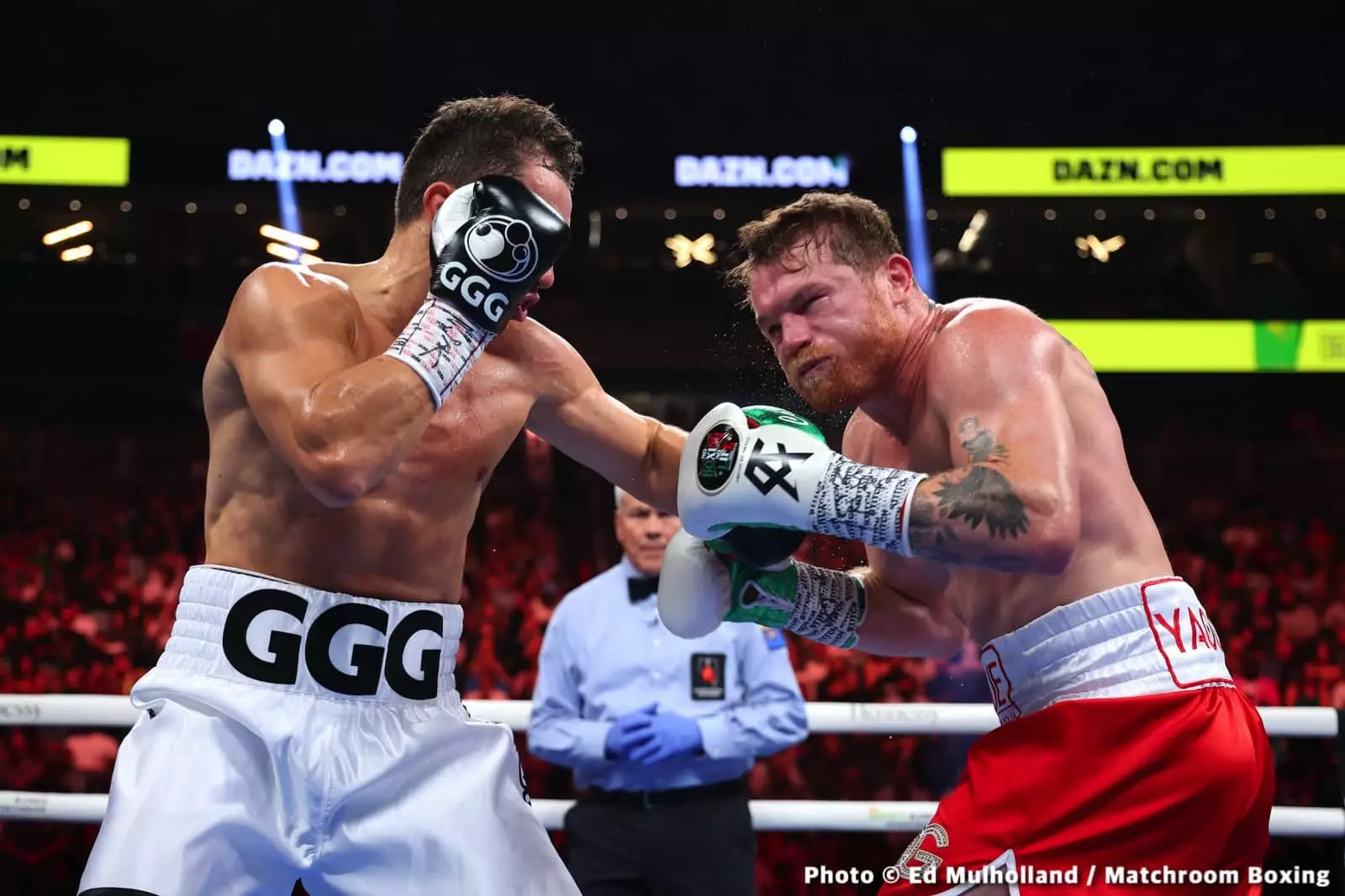Many boxing fans and analysts often perceive a fighter’s technique and skill as the ultimate determinants of success. However, Abel Sanchez’s critique underscores an often-overlooked truth: power remains a crucial factor in high-stakes fights. Comparing Terence Crawford to Gennadiy Golovkin reveals a fundamental misunderstanding of what it takes to hold off a relentless and potent puncher like Canelo Alvarez. While Crawford’s technical prowess is undeniable, Sanchez suggests that his lack of Golovkin-like punching strength makes him at a disadvantage. This critique illuminates a broader misconception that skill alone can compensate for the raw power that often turns the tide in close bouts.
Crawford’s current physical development and punch resistance appear not to match those of Golovkin, a fighter renowned for his devastating power and unshakeable toughness at middleweight. Golovkin’s ability to stand his ground and impose his will with force allowed him to neutralize Canelo’s offensive threats, setting a standard few can meet. Crawford’s lighter frame and comparatively modest punching power hint that he might struggle to replicate such a stifling presence. Boxing pundits should acknowledge that strength and power are not just supplementary skills—they are core to success in confrontations where physical dominance can dictate the flow.
The Pitfall of Rushing: Why Quick Ascensions Could Hurt Crawford
Crawford’s decision to move swiftly into the 168-pound division without taking meaningful tune-up fights reflects a risky gamble. Instead of building body strength gradually and testing himself against comparable opponents, he’s leapfrogged into a matchup against Canelo that demands peak physical conditioning. The absence of preparatory bouts at this weight class potentially leaves Crawford under-optimized physically, which could be exploited by Canelo’s renowned power punches.
This rapid transition raises concerns not only about physical readiness but also about tactical acclimatization. Fighters benefit greatly from a series of fights in a new division to adapt their style, improve stamina, and develop the muscle necessary to withstand the massive shots that a fighter like Canelo delivers. Crawford’s approach resembles a shortcut that underestimates the importance of gradual development, which could prove detrimental when facing a puncher of Canelo’s caliber. Without this foundational strength, Crawford might be vulnerable to moments of stoppage or a significant points deficit, especially if he’s forced into engaging in exchanges that favor Canelo’s power.
The Psychological Toll and the Illusion of Invincibility
Boxing is as much a mental game as it is physical, and Sanchez’s comments subtly hint at a deeper psychological disadvantage Crawford might encounter. Crawford’s pride and fighting spirit are well-known, but, as Sanchez suggests, this determination might lead him to engage recklessly when under pressure. When fighters fight without sufficient strength or reserves, they tend to force exchanges to prove their toughness. This bravado can backfire against a methodical and powerful counterpuncher like Canelo.
Furthermore, Sanchez’s analogy of Golovkin standing tall against Canelo reveals the importance of a fighter’s ability to impose his will physically before resorting to pure skill or tactics. Crawford’s lack of Golovkin-like physical presence could inadvertently enable Canelo to dictate the tempo of the fight, landing destructive shots that diminish Crawford’s confidence and stamina. The psychological edge swings heavily in favor of the more physically imposing and prepared fighter—something Crawford seems to underestimate at his peril.
Chasing Glory or Chasing Risk?
In boxing, the desire for legacy often propels fighters into high-profile matchups, but this pursuit should not overshadow pragmatic considerations. Crawford’s decision to bypass tune-up fights and hastily conquer a division signals a potentially reckless search for greatness. It’s worth questioning whether ambition is clouding strategic judgment or if the pressures of headline-making are outweighing the importance of a gradual build.
While the allure of a significant payday and global recognition is strong, the reality is that jumping into a fight with a powerhouse Canelo without adequate preparation might result in a swift, painful lesson. The risk of an early stoppage or a damaging defeat could set his career back significantly. A more measured approach—building strength, ironing out technical vulnerabilities, and gaining experience at this weight—might have yielded a more sustainable path to victory. Instead, Crawford risks rushing headlong into a fight he is ill-equipped physically and psychologically to handle, which could diminish his already stellar reputation.
The Bottom Line: Power Is the Equalizer
Ultimately, Sanchez’s critique anchors on a fundamental truth: power is not merely a supplementary attribute but often the defining factor in determining the outcome of elite matchups. Crawford’s technical brilliance alone might not suffice against a fighter like Canelo, who combines relentless pressure with knockout power. Golovkin’s strength allowed him to confidently stand his ground, absorb shots, and continually threaten Canelo—traits that Crawford, at this stage, seems to lack.
The fight’s result will likely hinge on whether Crawford can bridge this physical gap through strategic tactics, or if Canelo’s added weight and punch power will prove insurmountable. The discussion emphasizes that in boxing, size, strength, and resilience can trump even the most refined skills when the stakes are at their highest. Crawford’s current trajectory might underestimate the brutal reality of what it takes to survive and succeed against the sport’s elite punchers.


Leave a Reply